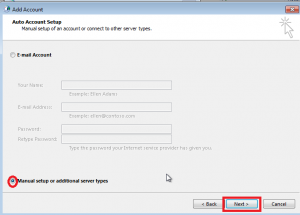
The user ID consists of a username on the left side of the at symbol and a domain on the right side.

Visit the forums at Exchange Online or Exchange Online Protection. Having problems? Ask for help in the Exchange forums. To see what permissions you need, see the "Recipients" entry in the Feature permissions in Exchange Online article.įor information about keyboard shortcuts that may apply to the procedures in this article, see Keyboard shortcuts for the Exchange admin center. You need permissions before you can perform this procedure or procedures. Also, the EOP PowerShell cmdlets use a batch processing method that results in a propagation delay of a few minutes before the results of the commands are visible. When you create mail users in EOP PowerShell, you might encounter throttling. Mail users don't require licenses in Exchange Online. To connect to standalone EOP PowerShell, see Connect to Exchange Online Protection PowerShell. To connect to Exchange Online PowerShell, see Connect to Exchange Online PowerShell. To open the Exchange admin center (EAC), see Exchange admin center in Exchange Online. What do you need to know before you begin?

You manage mail users in the Exchange admin center (EAC) or in PowerShell (Exchange Online PowerShell in organizations with Exchange Online mailboxes. For more information about mail contacts and mail users, see Recipients in Exchange Online. However, unlike a mail contact, a mail user has sign in credentials in your Microsoft 365 organization and can access resources. Both have external email addresses and both contain information about people outside your Exchange Online organization that can be displayed in the shared address book and other address lists. In Exchange Online organizations, mail users are similar to mail contacts.


 0 kommentar(er)
0 kommentar(er)
